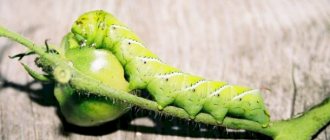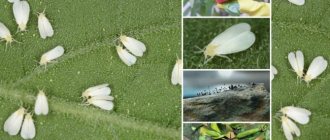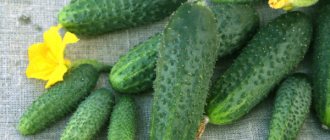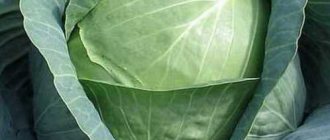Montbretia flowers (crocosmia) are still rarely grown in summer cottages. These perennial corms, like acidantheras, of the Iris family, which also have a third name - Japanese gladiolus, attract attention with their graceful paniculate inflorescences, which are located on long, thin peduncles. Their length is about 1 m. This plant is somewhat reminiscent of miniature gladioli, which is why Montbrecia got its popular name. It has decorative not only bell-shaped flowers, but also narrow sword-shaped dark green leaves, the length of which reaches 60 cm.
How to preserve Freesia longer?
Most experienced gardeners recommend storing freesia bulbs in a room with high humidity at a temperature of 20-25 degrees Celsius. If you do not have such a room in your house, you can place a net with bulbs over a vessel with water.
Interesting materials:
Where to go in Chelyabinsk with a girl in the evening? Where to go in St. Petersburg at night for free? Where is the North Pole moving? Where are files saved from Viber? Where are GIFs from Telegram saved on iPhone? Where are Valhalla screenshots saved? Where are videos saved from Telegram on iPhone? Where was Menshikov exiled? Where were they exiled to under the Tsar? Where do Muslims place the monument?
Description of the flower
The delicate scent of Montbretia resembles the aroma of saffron, which is why this flower is called crocosmia (saffron scent). The aroma becomes most audible after the inflorescences are dried. The flowering period of the plant differs in its duration: from July to the end of September.
The color of Japanese gladiolus flowers (and this is also the name of the flowers) can be varied: from yellow to dark red. Planted in a group or separately, montbretia will decorate any garden flower bed. A combination of different varieties of crocosmia looks great in landscape design. Such flowers look great in combination with other plants and against the backdrop of a green lawn. They are also grown for cutting, and the dried inflorescences are used to create bouquets.
Crocosmia care:
- Carry out systematic loosening of the soil. The plant has a very negative attitude towards stagnant moisture;
- Watering is plentiful, but not frequent;
- Fertilize with mineral fertilizers. This process must be applied before budding. Apply NPK mineral fertilizer at the rate of 15-20 g per 1 m2. Feed once every 15-20 days;
- Systematic weeding;
- Make a garter to the supports.
Crocosmia is a noble plant that attracts beautiful butterflies
Reviews from flower growers
For flower growers in Eastern Europe, crocosmia has not yet become a familiar flower, due to the paucity of information and knowledge on how to care for it. But increasingly, Japanese gladiolus is becoming a bright decoration of garden areas, ridges, and alpine slides. Those who have hosted a European guest note the extraordinary beauty of group plantings, original bouquets, and the opportunity to use dry plants in room design.
Disadvantages include the poor cold resistance of some varieties and the need to dig them up for the winter.
Preparing the storage pit
I dig a hole in the garden 80-100 cm deep, I don’t have enough strength for a larger one. But even this depth of the pit was always sufficient for the successful storage of corms in the climatic conditions of the Moscow region. In regions with very harsh winters and a thin snow cover, when the soil freezes heavily, you can dig a deeper hole.
The dimensions of the excavated storage pit also depend on the size of the bag with the harvested planting material. For example, I make a hole measuring 40x40 cm to store my corms. The main thing is to maintain the required depth for the successful overwintering of the plants in an earthen trench.
Crown anemone (Anemone coronaria), Asian buttercup (Ranunculus asiaticus)
After digging, the thickened rhizomes of these plants are washed, treated in a fungicide solution and dried to the state of “crackers”. Store in any box or bag at room temperature. Before planting, soak for a day.
In nature, this beautiful plant grows in southern Africa. In Europe, Crocosmia has been cultivated since the 19th century. Today this flower is widely popular among gardeners as a perennial bulbous plant. Crocosmia is also called Montbretia or Japanese gladiolus. The plant looks great in open flower beds. Designers recommend planting Japanese gladiolus with daylily, rudbeckia, and salvia.
Crocosmia has dense greenery, over which erect or drooping flowers bloom. The name of this plant translates as “saffron scent”, which is exactly the smell emitted by dried Montbretia flowers. This plant will be a worthy decoration of any garden, and cut inflorescences can delight with their beauty for fourteen days.
Planting montbretia in open ground
Preparing the place
For planting, growing and caring for montbretia, we choose brightly lit areas of the dacha. In partial shade it somewhat loses its decorative effect. In areas with poor lighting, the plant may not bloom at all. Organic-rich, well-moistened soils are most suitable for it.
Soil fertilization
We prepare beds for planting crocosmia with individual bulbs in the fall. To do this, we dig them well and add 2 buckets of rotted manure, 100 grams of slaked lime, 40 grams of superphosphate, 20 grams of potassium chloride into the soil. This amount of fertilizer is calculated for 1 square. m. of land. Before planting the plants, we fertilize the soil with nitrogen fertilizers (30 g/sq. m.). We plant the corms of these flowers in a permanent place in early spring after the soil has warmed up sufficiently.
Ways to grow crocosmia
We grow montbretia in three ways: corms , children and seeds . In our climatic conditions, the most effective methods of propagating Japanese gladiolus are bulbs and children. When sowing seeds, the appearance of inflorescences different from the mother plant may appear. When grown in the country, the seeds of such a plant rarely have time to ripen before the onset of cold weather, so they are not recommended for use for propagating flowers. They are sown in the ground in April-May. When propagated by seed, Montbrecia blooms only in the 2nd year.
Processing of planting material
A month before planting crocosmia corms in the ground, we keep the planting material indoors for several days. Then we disassemble it into adult bulbs and children. Trim off the roots and remaining leaves and stems. Before planting, place the planting material in a warm 0.1% solution of potassium permanganate for several hours. This procedure not only disinfects the tubers and children, but also stimulates their germination.
When to plant corms
We plant Montbrecia at the end of April. We place the corms in the open ground bed with an interval of 12-15 cm from each other. We embed them in the ground to a depth of 8-10 cm. We place small children according to a 6x6 cm pattern, planting them in the ground to a depth of only 4-5 cm. The children bloom the next year.
Gladiolus, Tigridia, Acidanthera
These corms prepare for winter in the same way. At the beginning of October (if autumn is wet, then earlier, starting from the end of September), the stems are cut, leaving 15–20 cm in length. The plants are carefully removed from the ground so that the children do not fall off: they dig them up with a pitchfork and pull them out by the rest of the stem. After this, you can separate the baby.
Planting material is laid out by variety and size in pre-prepared containers. Under the young corm, the old, wrinkled corm is preserved; it is not yet separated so as not to damage the bottom. The corms and the baby are washed first in water, then in a solution of Intavir or Iskra and again in water, and then immersed in a solution of potassium permanganate. You can use the drug "Maxim".
in the photo: tigridia flower
After processing, the corms are laid out on newsprint and dried. The temperature is maintained at 25–30°C for 5–7 days, ensuring good ventilation of the room, then dried for a month at a temperature of +18. +20°C. If the old corm is easily separated, then the drying process can be considered complete. The dried remains of the stems are cut off with scissors. The covering scales are not removed.
Cardboard boxes or boxes with lids are used for storage. Their inner walls are treated from a spray can with an insecticide such as dichlorvos (any one intended for household purposes will do). Dried corms are laid out by variety in nylon bags and placed in boxes, covered with lids and wrapped in newsprint so that the insecticide evaporates more slowly. Optimal storage temperature is +1. +5°С, relative air humidity about 80%.
Pests
Crocosmia may be attacked by harmful insects. If you do not fight them in time, the plants will lose their decorative properties and there is a possibility of their death. The main pests of Montbrecia are as follows:
| Pests | Description and signs | Fighting methods |
| Thrips | Small insects suck cell sap from leaves. Discolored spots form on the leaf blades. Plants lose their decorative appearance | Weeds must be removed around Montbrecia. Plants affected by pests are treated with the following preparations: Karbofos, Fitoverm, Actellik, Confidor |
| Spider mite | The insect is difficult to see because it is 1 mm long. The mite is dangerous because it sucks out cell sap, weakening the plant. You can detect it by the cobwebs enveloping the bushes. The pest appears during dry periods | You can try to wash off the spider mites under the pressure of water. If large pest colonies have formed, special preparations are used: Kleschevit, Iskra-Bio, Fufanon-Nova |
| Medvedki | The pest is colored brown. Its length is 3.5-5 cm. The mole cricket feeds on corms, as a result the aerial part grows weak or does not appear at all | Traps are set for the pest. In the fall, they dig a hole, fill it with horse manure, and cover it with earth. Mole crickets that have settled in for the winter are collected and destroyed. |
How are tubers and bulbs of ornamental flowering plants prepared for wintering and stored?
Montbretia, or crocosmia (Montbretia, Crocosmia)
This plant is usually treated like this: at the end of September, the corms are dug up, dried for several days at room temperature, and the corms are separated from the corms. Store at temperature +5. +7°С.
Another method will also work: dig up the bushes entirely, do not shake off the soil, and do not separate the baby. Store dried nests in an open container. If there are a lot of corms, then you can take a chance and leave some of them to overwinter in the soil, mulching with a thick layer of peat (at least 15 cm).
in the photo: flowering crocosmia or montbretia
Autumn work with crocosmia and storage rules:
First option:
- In October, the corms are dug up. By autumn, 4-6 daughter children are formed on the mother corms. The clod of earth around the mother plant is not completely shaken off;
- The leaves and stem are trimmed, leaving a stump of 5-6 cm, while preserving the root system;
- It is necessary to carry out light drying for 10-15 days;
- Place into paper bags. At the same time, the corms are sprinkled with peat or sawdust or covered with moss;
- Store in a cool place. This could be a basement or a room.
Second option:
- You can leave the corms in a flower bed or flower bed. Then it is necessary to cover it with a layer of fallen and dry leaves and pine needles. Apply additional covering with film.
- You can also make a cover with sawdust, but the layer thickness should be 15-20cm.
Overwintering in dry soil is your guarantee that next year the crocosmia will delight you with its flowering!
With this method of wintering, in early spring it is necessary to remove the cover and trim the old leaves. It is important to know that plants are grown in one place for 3 to 5 years.
Frost-resistant varieties of montbretia (crocosmia)
The most frost-resistant varieties when grown are small-flowered varieties. With appropriate insulation, they can overwinter in the ground. The most popular varieties that can normally survive frost of -30 degrees: Lucifer , Mason's Montbretia , Emily Mackenzie . Moreover, in the first year after planting, even frost-resistant varieties of Japanese gladiolus bushes are carefully covered for the cold period. Crocosmia overwintering in the ground blooms much earlier and has larger inflorescences. Low frost-resistant varieties include His Majesty and Star of the East .











